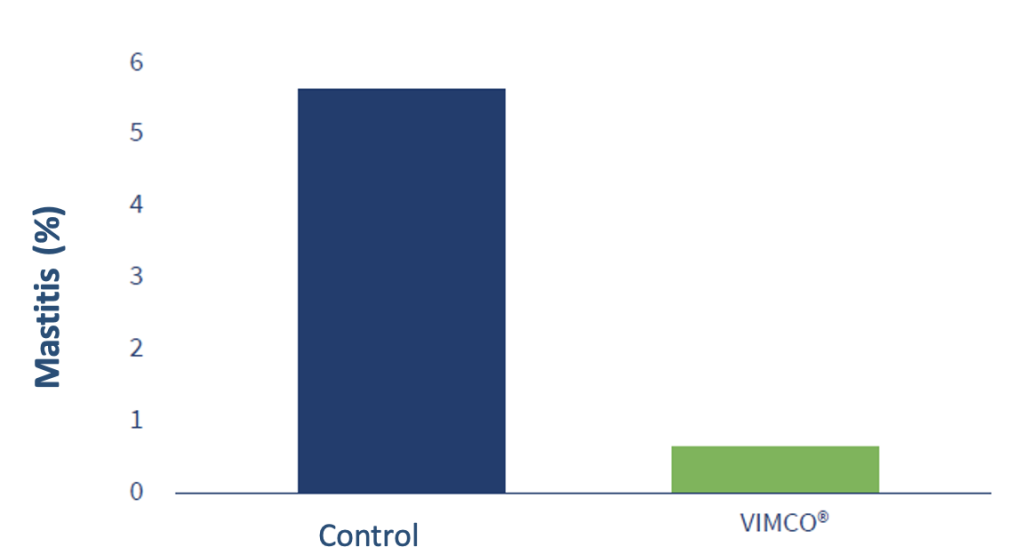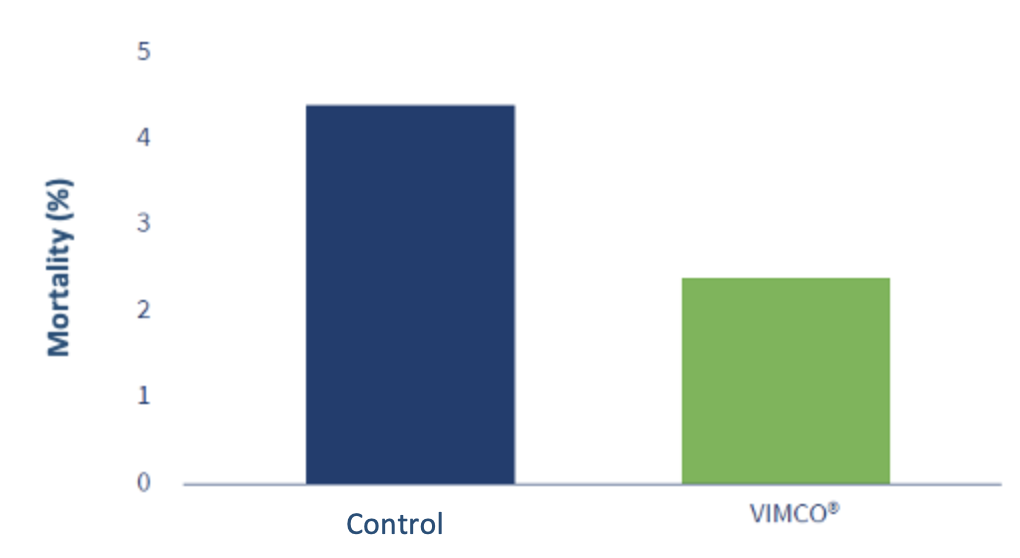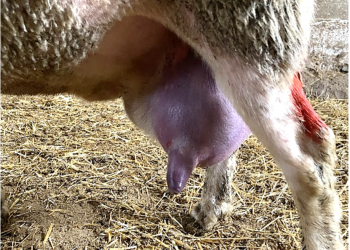On dairy goat farms, it is always advisable to implement a mastitis control plan to avoid the impact of this pathology. This program should include vaccination, especially against Staphylococcus, since it is the primary pathogen.
A study was recently carried out on a goat farm in the Netherlands, in which the impact of VIMCO® on the udder health of primiparous goats was evaluated.
This study was presented at the 10th International Sheep Veterinary Congress (ISVC), and below we describe the results obtained.
How was the study conducted?
The study was carried out at De Römer Dairy Goats farm (Heythuysen, Netherlands) with a herd of 3,000 goats.
A total of 349 pregnant goats (12-16 months old) were selected and randomly separated into the Control Group (N=180) and the Group Vaccinated with VIMCO® (N=169)

Kidding lasted about five weeks, and when all the goats had given birth, they were mixed in with a group of 1,600 adult goats.
How were cases of mastitis detected?
The goats were examined at the first milking after giving birth (T=0), taking into account the trimming and inspection of the udder to detect possible clinical cases.
During the subsequent four months, data was collected on milk production, SCC, udder symmetry, clinical cases and mortality due to gangrenous mastitis.
Results obtained

After giving birth (T=0), 5.6 % of goats in the control group showed clinical mastitis, compared to 0.6% in the vaccinated group. As for udder asymmetry, it was detected in 16% and 7.7%, respectively.
The group vaccinated with VIMCO® presented a lower prevalence of clinical mastitis than the control group

The other important point evaluated was mortality due to gangrenous mastitis. In the control group, eight deaths were recorded, and in the vaccinated group, there were four.

What can we conclude?
Vaccination with VIMCO, a Staphylococcus biofilm vaccine, has been shown to:
– Reduction in clinical mastitis in primiparous goats at the first milking.
– Reduce udder asymmetry
VIMCO® has a positive impact on udder health in primiparous dairy goats
Article written by:
Tania Perálvarez Puerta. Global Product Manager, Small Ruminants Franchise – HIPRA


